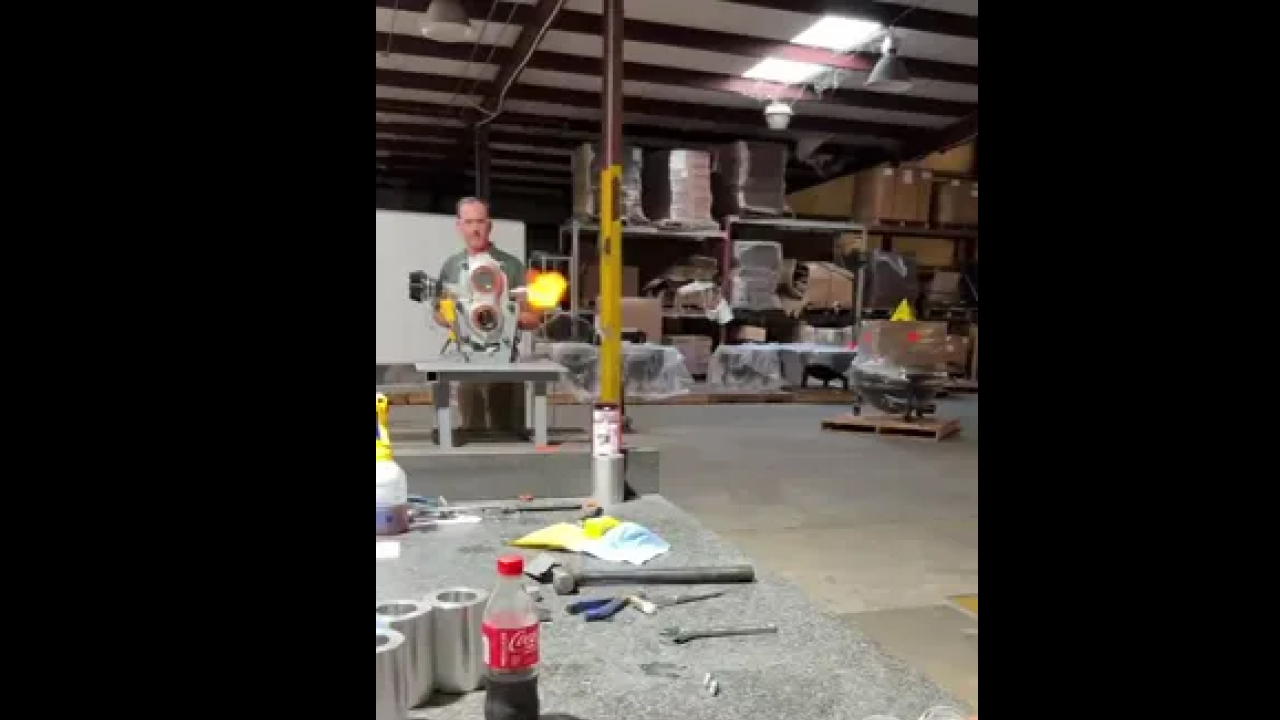
We are now taking PRE-ORDERS. no DOWN PAYMENT
All Astron Aerospace’s technology’s are either PATENTED or PATENT pending.






What makes the H2 Starfire Engine so much more powerful, light, and efficient than a piston engine?
There is a tremendous amount of friction, heat, parasitic, and pumping losses in a piston engine. Each time a piston moves up and down, the rings scrape against the piston walls and that causes friction.
What makes the H2 Starfire Engine so much more powerful, light, and efficient than a piston engine?
The H2 Starfire Engine provides the ability to power a ducted fan much more efficiently, and without the major disadvantages of requiring conventional Brayton cycle propulsion technology employed by modern turbine engines.
Matthew Riley, the H2 Starfire Engine inventor, is no stranger to patent protection. Matthew has many patents to his credit, and this is no different. His latest creation, the H2 Starfire Engine , is covered by multiple patent disclosures, provisional applications, and pending patent grants. Astron has filed nearly all of the patents both domestically and internationally. This includes China, Korea, India, and other areas where cars and aircraft are made. This technology is too good not to protect, so Astron has it covered!
Matthew Riley is the Founder and CEO of Astron as well as the Chairman of the Board. Matthew's latest invention, Astron's Omega 1 engine is revolutionary and will be disruptive to every engine market. Matthew is a creative genius in mechanical propulsion systems.
In 2011 at the SAE conference Riley was recognized with one of the greatest achievements as an inventor when he was awarded the “Best of the Best” award for a two-stroke engine design that he invented. Matthew has many patents to his credit and has many new patents, both filed and pending for Astron's revolutionary new technology.
Mr. Yogesh Umbarkar brings a wealth of experience and expertise to Astron Aerospace with his educational background in automotive and off-highway R&D. His specialized knowledge in engine design, simulation, and virtual validation, gained through his work at a world leading technology companies like Ricardo, Cummins, and Caepro, makes him a valuable asset for the company.
As an Engineering Director, Mr. Umbarkar has demonstrated exceptional leadership skills by successfully overseeing powertrain technology consulting projects. His contributions in expanding the software and consulting business through the development of technical capabilities and identification of new opportunities showcase his strategic thinking and business acumen.
Beyond his professional accomplishments, Mr. Umbarkar is widely recognized for his comprehensive understanding of engine design and development across various industries. He has actively shared his expertise as a renowned speaker and has chaired international conferences, further establishing himself as an authority in the field. Additionally, his technical papers and articles published in leading industry magazines have contributed to the advancement of engineering knowledge.
Mr. Umbarkar's educational background, including a Master's degree in Mechanical Engineering from VJTI, Mumbai, and an Executive MBA from S.P. Jain Institute of Management and Research, Mumbai, highlights his strong academic foundation and his ability to merge technical expertise with business management principles. Furthermore, his participation in the Harvard Executive Program underscores his strategic thinking and leadership capabilities.
With his extensive experience, leadership abilities, and unwavering passion for engine design and development, Mr. Yogesh Umbarkar is poised to make significant contributions in driving innovation and business scale at Astron Aerospace!
Chris is an automotive industry legend. He is a 40 year automotive industry veteran and is known as The "Father of the Ford GT," and the "engineer´s engineer.".
Other Products: 2005 Ford Mustang, Ford 150, Chrysler PT Cruiser, Dodge Viper, Plymouth Prowler, second-generation Chrysler Minivans, Jeep Grand Cherokee, Delorean Twin-Turbo,Chrysler/Calspan Research Safety Vehicle and numerous Powertrains, among others.
Mr. Johnson is Astron’s CFO. He has been employed as a tax accountant for over 20 years. He currently is majority owner in a small CPA firm in Derby, Kansas that employs 10 people. They provide tax, consulting and accounting services to a wide range of individuals and businesses.
He received his Bachelors of Accounting degree from Wichita State University in 1998. In 2000 he received his Masters of Professional Accountancy degree from Wichita State University. He then sat for the CPA exam and passed it in 2002 receiving his certificate to practice. He is currently a member of the American Institute of Certified Public Accountants and the Kansas Society of Certified Public Accountants.
Mike Mockry has been in the aerospace industry for over 30 years and is the owner of Mockry & Sons Machine. His career in aerospace began in 1988 as a shipping & receiving clerk at McGinty Machine where he advanced to becoming an accomplished machinist and manager.
With this experience, he moved into other managerial roles including becoming the Shop Supervisor and later the Quality Control Manager and eventually a General Manager. In 1994 along with his father he started Mockry & Sons Machine Company where he has spent the last 26 years managing this successful aerospace manufacturing company. During this time, he also gained experience in the automotive industry helping a local business develop and reengineer their fluid exchange machines including transmission, coolant, brake, and fuel systems. He continued to grow his business in the aerospace industry implementing the business systems and certifications necessary that helped his company to become a first-tier supplier to multiple aerospace manufacturers such as Spirit AeroSystems and Textron Aviation to name a few.
Cody Liby has been in the automotive and aerospace industries for over 24 years. He began working in the automotive industry in 1994 at R&L Automotive where he built engines and performed other automotive repairs for all makes and models.
In 1997 he began working for a small aerospace machine shop, Mockry and Sons Machine and in 2000 he became the Shop Manager. During this time, he also accomplished

Director of Manufacturing Operations

Mark Kendrick has been a business owner and a manager of operations for the past 30 years. He was the sole proprietor of Kendrick Farms where he managed all facets of farming operations including production control and equipment maintenance while overseeing all sales and financial aspects of the business.
From 2009-2015 he was a member of the Wellington COOP Board of Directors overseeing the administration of product needs for the local farming community and from 1998-2006 he was a member of the Chikaskia TWP (township) board of directors where he helped oversee the maintenance and infrastructure needs of the township. He moved on in 2017 to work for Clearwater Engineering who is a supplier to the aerospace industry.
This move provided him experience in high-speed precision milling machining and the operations of a modern machine shop. He quickly moved into shop management and eventually into the expanded role of Operations Manager.
With this change, he managed all complex high speed and hard metals milling as well as assembly, maintenance, and facilities. His hands-on experience in machining and shop floor management, as well as other managerial positions, has also led to leading roles in lean manufacturing, production management, and efficiency initiatives including high levels of work in business systems and operations management.
During his tenure as a United States Marine, Steve developed a strong mechanical background. As Technical Director Astron, this background, along with technical data collection and engineering relationships, Steve has been extremely beneficial in the development of the Omega 1 engine with insight into America’s energy and environmental needs.
He has an impressive background. For the last decade, Steve has been involved in numerous projects focused on the modeling of mobile source emissions related to gasoline and ethanol blends. Steve’s influence was instrumental in enabling testing that resulted in the publishing of numerous Society of Automotive Engineers (SAE) papers on ethanol’s performance and emission benefits. In 2019, Steve was awarded the High Octane Award by BBI International and Ethanol Producer Magazine for his passion and unstoppable pursuits to benefit the ethanol industry.
Steve has also been instrumental in raising awareness within the scientific community, ethanol industry and general public on the health and emission benefits of ethanol. His dedication to engine and fuel properties has created a new level of research and understanding related to fuel ethanol.
Dr. Philip E. Alei is a Ph.D. Mechanical Engineer with over 25 years of experience in designing, building, and testing prototypes. He is a Certified SolidWorks Professional (CSWP) and has taught Beginning, Intermediate, and Advanced SolidWorks topics at the college level.
These lightweight parts are equivalent to or better than quality purchased components, but custom parts can be designed and produced in a matter of days. This combination of education, skill, experience, and fabrication capability puts Dr. Alei in a unique position to provide ultra-fast design iterations on a large variety of projects. In 1991, Dr. Alei and two other Ph.D. graduates from UC Berkeley founded Berkeley Engineering And Research (BEAR, Inc.), a consulting company focused on design, analysis, and testing of a variety of mechanical devices and systems. More can be found on our website: www.bearinc.com The company is now involved with several COVID-related projects, including a non-invasive ventilator.
Using a CPAP, full-face snorkel, and related interface we can provide oxygen to a patient without intubation. Although the United States government has not approved the device, we have successfully employed hundreds of these units in foreign countries, saving many lives in the process. Dr. Alei’s passion is providing fast prototype development, taking an idea “from your head to your hands” A recent colleague has stated: “Dr. Phil, with you, I don’t even need a bar napkin! I wave my hands with design ideas, and you put a working prototype in my hands within days that is even better than I imagined”
Introducing an innovative, advanced, and simplistic new engine technology that will completely change the automotive, aerospace, marine, recreational vehicle, and power generation engine markets.
Astron’s H2 Starfire Engine has unmatched efficiency, extremely low to ZERO HARMFUL EMISSIONS, unrivaled power to weight ratio, and is the ultimate range extender. The H2 Starfire Engine’s purpose is to change the world we live in for the better.
Note: This technology is projected to be capable of flying through a flock of birds, volcanic ash, smoke, and sand without skipping a beat, as well as the highest altitude flying capability that exists. Also does not require rotor seals at all. Tight tolerances and high RPMs solve that problem, not enough time for the air to leak when running!

Thank you for viewing our new technology © 2023 Astron Aerospace, LLC. All Rights Reserved | Privacy Policy